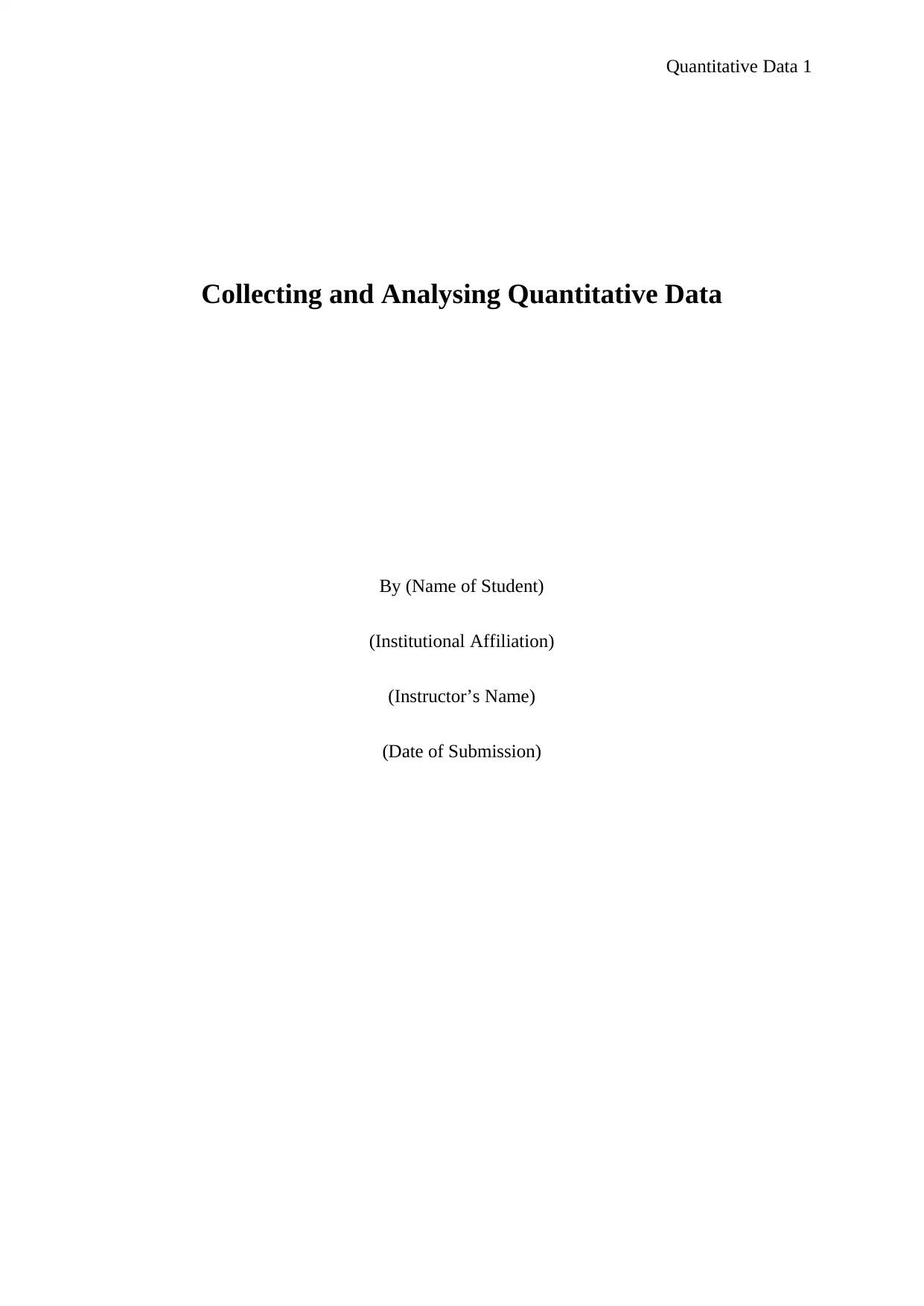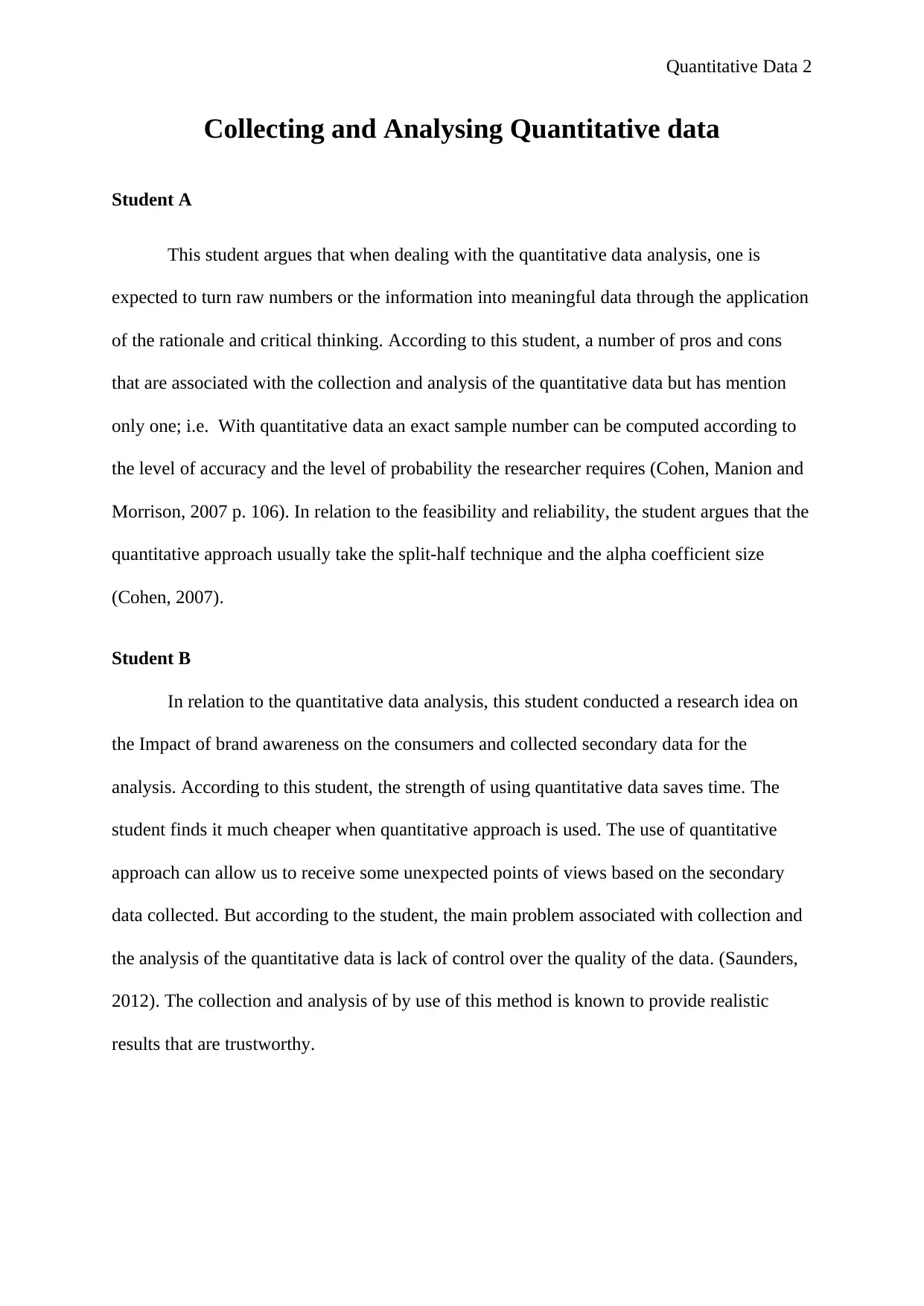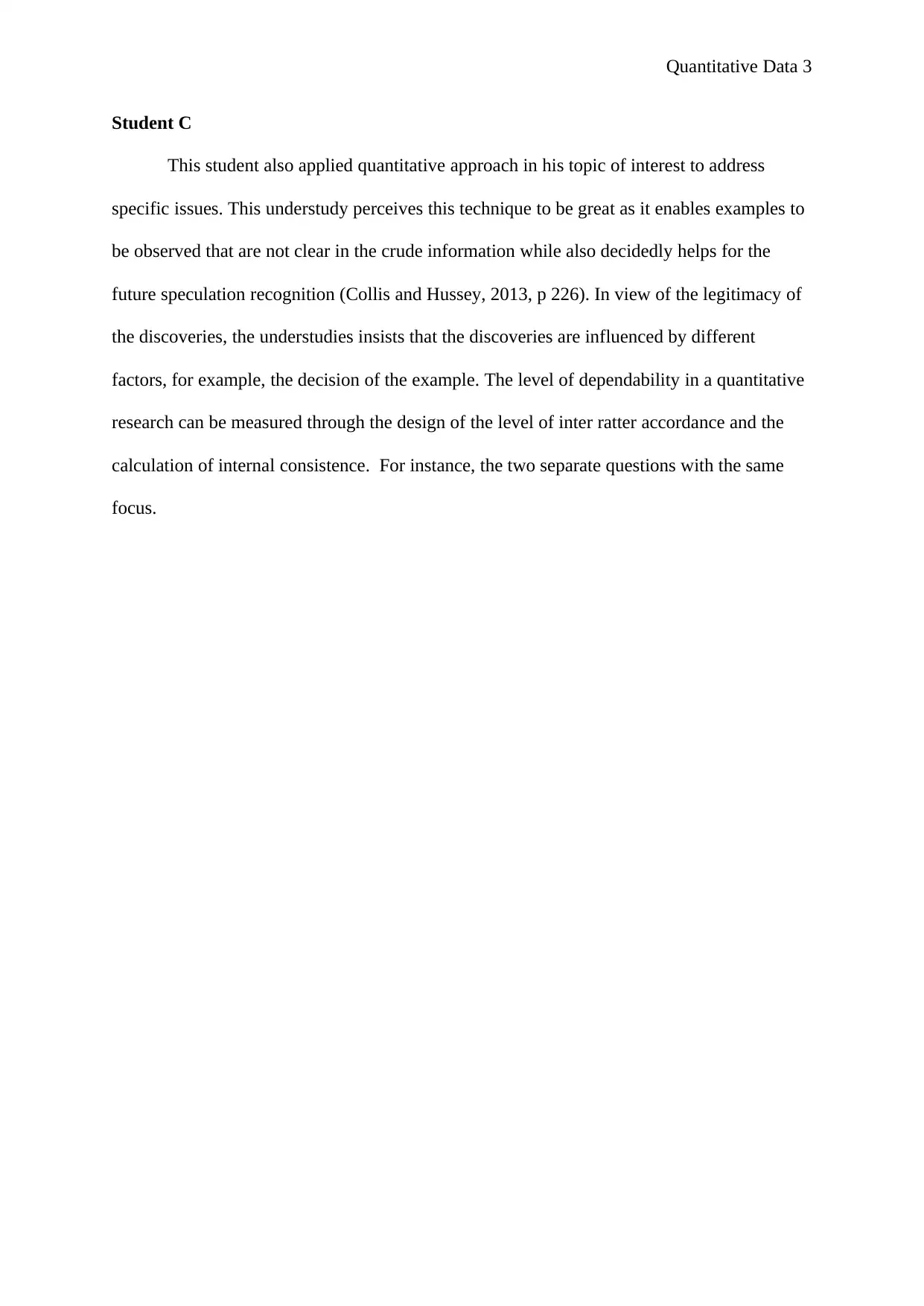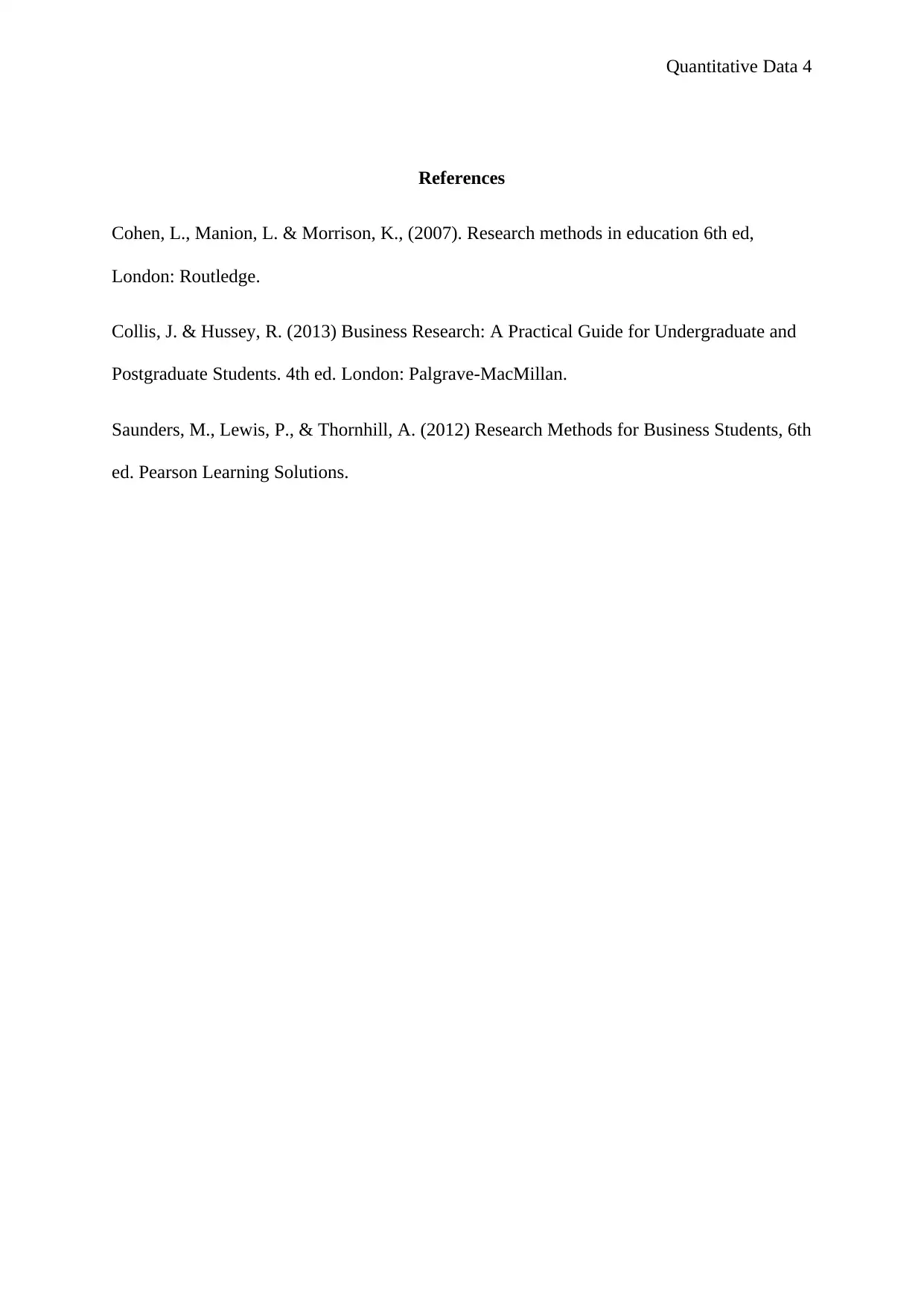KCE Week 4 Assignment: Quantitative Data Analysis and Collaboration
VerifiedAdded on 2023/01/19
|4
|533
|74
Homework Assignment
AI Summary
This assignment presents a collaborative analysis of three student responses regarding quantitative data analysis. Student A emphasizes the importance of turning raw numbers into meaningful data through critical thinking, mentioning the ability to compute exact sample numbers for accuracy and reliability using techniques like the split-half technique. Student B discusses the benefits of quantitative data, such as time and cost savings, and the potential for discovering unexpected viewpoints, while also highlighting the lack of control over data quality as a major drawback. Student C views quantitative methods as excellent for observing patterns not clear in raw data and aiding future speculation, stressing the impact of factors like sample selection on findings and the measurement of reliability through inter-rater accordance and internal consistency. The assignment brief requires a response to each student's work, discussing the pros and cons of quantitative research, the suitability of the methods for research plans, ethical and feasibility barriers, alternative methods, and potential ethical issues and constraints in primary data collection, with 2 references for each response. Cohen, L., Manion, L. & Morrison, K., (2007) and Saunders, M., Lewis, P., & Thornhill, A. (2012) are mentioned as references.
1 out of 4






![[object Object]](/_next/static/media/star-bottom.7253800d.svg)